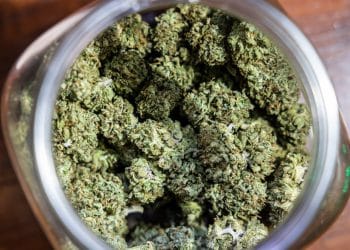Here you can find a selection of cannabis scientific studies published in the latest month. Each article is correlated with a short abstract describing the purpose of the study and the main research findings.
A great cannabis culture comes from great and peer reviewed sources! For this reason we believe in the importance of consulting reliable sources. Whether you are interested in a particular article don’t hesitate to read the full piece for more information.
Cannabis and Health ⎯ Best new findings
Cannabis Use: A Marker of Clinical Severity in Inflammatory Bowel Disease?
This research was conducted utilizing a propensity score – matching methodology in order to identify the risk associated with the cannabis consumption and the emergency department visits, hospitalization, opioid use and corticosteroid use in patients with inflammatory bowel disease (IBD).
The study found that there wasn’t an increasing risk of mortality of or surgery, nevertheless it is supposed that cannabis use could potentially be an indicator of the disease severity. More studies and different methods should be applied in order to fully reveal a correlation between IBD severity and cannabis use.
Source: https://doi.org/10.1093/ibd/izad221
Effects of Smoking Marijuana on the Respiratory System: A Systematic Review
This systematic review presents the issues of cannabis use linked with respiratory health. Cannabis smoking negatively impacts lung function and leads to various respiratory problems including pneumonia, emphysema, asthma and chronic obstructive pulmonary disease. The prolonged consumption of cannabis through combustion/inhalation increases the risks of respiratory function impairment.
The correlation between cannabis use and lung cancer is weak and more extensive research should be done to clarify all the possible risks. From this research review it is clear that the recreational consumption of cannabis should be discouraged, mainly among young adults.
Source: https://doi.org/10.1177/08897077231186228
Δ9-Tetrahydrocannabinol Effects on Respiration and Heart Rate Across Route of Administration in Female and Male Mice
The characterization of the impact of sex and administration route of tetrahydrocannabinol (THC)-induced changes in cardiopulmonary phenotypes in mice. The heart rate and respiration were monitored in the same mice group experimenting the administrations of THC through aerosol, oral gavage, intraperitoneal and subcutaneous injection.
From this study results that all the different administration routes altered the respiratory volume and the heart rate , with effects linked to the amount of THC administered. Interestingly the effects of aerosolized THC were short lived but the first to onset, together with the intraperitoneal THC administration.
An important trend was that while THC decreased respiration and heart rate, female mice given oral gavage THC showed increased heart rate. This kind of study is important to establish the differences in timeline and cardiopulmonary response to THC following the most common preclinical routes of administration.
Source: https://doi.org/10.1007/s12012-023-09810-9
Cannabis and Technology ⎯ Best new findings
Identification and Quantification of the Main Psychoactive Ingredients of Cannabis in Urine Using Excitation–Emission Matrix Fluorescence Coupled with Parallel Factor Analysis
This study reports the use of excitation-emission matrix (EEM) fluorescence spectroscopy coupled with parallel factor (PARAFAC) analysis to identify and quantify cannabinoids in urine samples. The analyzed cannabinoids included cannabidiol (CBD), cannabinol (CBN), tetrahydrocannabinol (THC) and tetrahydrocanabinolic acid (THC-COOH). The reported method is solventless, reliable, fast and it is capable of performing an accurate analysis of cannabis abusers.
Source: https://doi.org/10.1021/acsomega.3c04913
Recent advances in illicit drug detection sensor technology in water
This research investigates new methods to successfully detect illicit drugs such as opioids, amphetamines, cannabis and cocaine in wastewater. Using electrochemical and optical sensors it is possible to detect these substances, cutting the costs and the time of traditional analytical methods such as liquid chromatography coupled with mass spectrometry (LC-MS), or gas chromatography coupled with mass spectrometry (GC-MS) or high-performance liquid chromatography (HPLC).
Despite the high sensitivity and precision of these methods these machineries require skilled technicians, are quite expensive and not portable. Monitoring wastewater on site with alternative analytical methods could help evaluating the environmental impact of these substances, but could be also useful to track illegal drug use.
Source: https://doi.org/10.1016/j.trac.2023.117295
Solvent extraction of Cannabis sativa under cryogenic conditions
This study focuses on the cryogenic extraction of cannabis inflorescences using ethanol as solvent. At room temperature ethanol extracts chlorophyll together with cannabinoids, while at low temperatures this solvent can be more selective for cannabinoids and other cannabis constituents such as terpenes and flavonoids.
In this research various extraction temperature have been tested going from −80 °C to 20 °C. All the data regarding cannabinoid and terpene quantification are reported for each different operating temperature. The best conditions were found at -20 °C and a solvent/solid ratio of 16:1 mL/g.
Source: https://doi.org/10.1016/j.seppur.2023.124906
Veterinary Use of Cannabis — Best Latest Findings
Hemp seed (Cannabis sativa L.) cake as sustainable dietary additive in slow-growing broilers: effects on performance, meat quality, oxidative stability and gut health
The aim of this study was to evaluate the effects of dietary inclusion of hemp seed cake on slow-growing broilers. The quality of the meat wasn’t affected by this change in the diet of broilers. Hemp seed cake influenced positively the lipid profile of the meat and improved the oxidative status and gut health, representing an interesting and valuable alternative ingredient in slow-growing broilers.
Source: https://doi.org/10.1080/01652176.2023.2260448
Endocannabinoid System Receptors at the Hip and Stifle Joints of Middle-Aged Dogs: A Novel Target for the Therapeutic Use of Cannabis sativa Extract in Canine Arthropathies
This research investigates the presence of specific endocannabinoid system receptors in the joints of middle-aged dogs. These receptors, including CB1R, CB2R, and GPR55, appear to be promising targets for therapeutic interventions using cannabis derived extracts against arthropathies in dogs.
This study confirms the important role of the endocannabinoid system as therapeutic target of veterinary medicine for a wide variety of physiological issues including pain, inflammation, neurological functions and immune functions.
Source: https://doi.org/10.3390/ani13182833
Pharmacokinetic modeling of orally administered cannabidiol and implications for medication control in horses
The goal of this research study was to evaluate the pharmacokinetic properties of cannabidiol (CBD) following oral administration in horses, in order to produce data to help anti-doping control laboratories to interpret analysis results. The need for this kind of research is because cannabinoids are banned in equine sports and limited info is available regarding the CBD detection time in urine and blood samples.
The mixed approach used for population pharmacokinetic analysis exploited a non-linear mixed-effects model and non-compartmental analysis. The concentrations of CBD and its metabolites were evaluated using gas-chromatography coupled with mass spectrometry.
Source: 10.3389/fvets.2023.1234551












